THE GRASSHOPPER PLANES OF THE LOUISIANA MANEUVERS
BY RICKEY ROBERTSON
The Louisiana Maneuvers was a pivotal part of history of American history and we still remember this event in our area. The United States Army was so small in 1939 that it was ranked 17th on a world wide scale of armies in the world. The army had only 190,000 men in its ranks, with 45,000 of these stationed overseas. But what was even more alarming was the lack of equipment that the army had in its inventory. Many of the active duty Army and National Guard units were using World War I uniforms and equipment and weapons, and some units actually having in their inventory equipment from as far back as the Spanish-American War of 1898. But one thing that was non-existent and was much needed by the army was observation aircraft.
In the army prior to World War II all scouting and reconnaissance was conducted by mounted cavalry units and infantry patrols and there was no air observation for field artillery and ground units. For these units there were only forward observers who had to get into position to see and observe the enemy, sometimes by even climbing trees for an even better view ! But this problem was addressed by both the Army Air Forces and Army Ground Forces Command when the Secretary of War established air observation units that would actually be provided to ground units since Army Air Corps aircraft were not always available to assist . Some artillery officers even concluded that if these planes could be flown by artillery officers who were in direct radio contact with their units, could adjust artillery fire to pin point accuracy. Supplied to these units were small one engine airplanes, named "liaison airplanes" that could land and take off on a relatively short level piece of ground . So the three leading aircraft manufactures of this time, Aeronca, Piper, and Taylorcraft placed 11 airplanes at the complete disposal of the army. But the army didn't have pilots for these planes so the army got civilian pilots to fly these planes. Now that the army had these aircraft and was receiving men and equipment into its ranks, training needed to be conducted. But where ? Louisiana !
As the Louisiana Maneuvers of 1941 began, in flew the 11 little liaison airplanes. Most military equipment always receives a nickname from soldiers, and these little planes also were nicknamed. Major General Innis P. Swift, commander of the 1st Cavalry Division, when he saw the first little plane land stated "you look just like a grasshopper when you landed that thing out there in the boondocks and bounced around". So now they were to be known as the "Grasshoppers". And they even had their own insignia, a flying grasshopper with a smoking cigarette in its mouth.
Throughout the Louisiana Maneuvers the grasshopper airplanes were everywhere. During the Battle of Mount Carmel the little observation planes were flying and directing the Blue Army who attacked General George Patton and his Red Army at Mount Carmel Church and Cemetery. All over the maneuver area these planes could be seen in the air and on the ground. They were something new for the folks to look at especially when they landed in their hay fields! I have two stories concerning the grasshopper planes. Glen Herrington remembers that one day one of the grasshopper planes landed in their field at Peason after having some problems. The Herrington Family allowed the army to bring the plane to their barn and allowed a mechanic to stay there while he worked and repaired the plane of its mechanical problems. Glen got to climb all over the plane and became friends with the mechanic. But one day it was repaired and ready to fly. The mechanic, who also was a pilot, fired the grasshopper plane up and headed for a takeoff across the field. As the plane left the ground the tail wheel caught the top wire of the barbed wire fence and flew away trailing this wire behind it ! And Bobby Chance, who lived at Mount Carmel, came in from school one day to see one of the grasshopper airplanes parked near the family's barn. They heard someone shouting and they headed down there and found that the bull kept in that pasture had the pilot captured in the cockpit of his plane. After getting the pilot out of the plane he advised that he had ran out of gas and had to land quickly. He asked if he and his plane could stay there overnight and he was allowed to do so. Bobby states that the next morning the pilot appeared with 2 army jerry cans filled with regular gasoline which he had "appropriated" during the night and he poured it into the planes fuel tank. He climbed aboard , started the plane, waved at the Chance Family, and flew off into the wild blue yonder ! Yes, all they needed was regular automobile gasoline to operate on !
After the Louisiana Maneuvers ended, the army continued to conduct maneuvers as America faced an upcoming war in Europe. Maneuvers were continued in Tennessee, Texas, and the Carolinas. These 11 little grasshopper planes had flown over 400,000 miles and conducted over 3,000 missions. What a record and what a performance ! And unbelievably some of these planes are still in existence. In September 2014 at the old DeRidder Army Air Base in DeRidder, La. there was a Louisiana Maneuvers Re-enactment that included a "Grasshopper Fly-in" of these planes. It was great watching these little planes fly around and conduct "flour bombing missions" for the crowd. And get ready, they are coming back to DeRidder on May 29 and 30, 2015 for the 2nd Annual Commemoration of the Louisiana Maneuvers and Grasshopper Fly-in . For more information it is available at www.deridderarmyairbase.com.
These little planes were much less costly than larger planes, they could take off and land almost anywhere , and they could keep direct communications to units on the ground. Due to the great success of these planes during the maneuvers, the U.S. War Department on December 8, 1941 gave the okay for a new Army Aviation Section to be formed so that 2 grasshopper planes would be assigned to each field artillery battalion, and 2 planes would be assigned to each division, brigade, and group artillery headquarters and commands. And from there these planes became a fixture of the U.S. Army. Those readers who served in World War II may remember the grasshopper planes in your area of operations and those of you who remember the Louisiana Maneuvers may still remember these fascinating little planes flying around everywhere. And guess what ! You were a witness to history in the making by these little planes that will forever continue to live on !
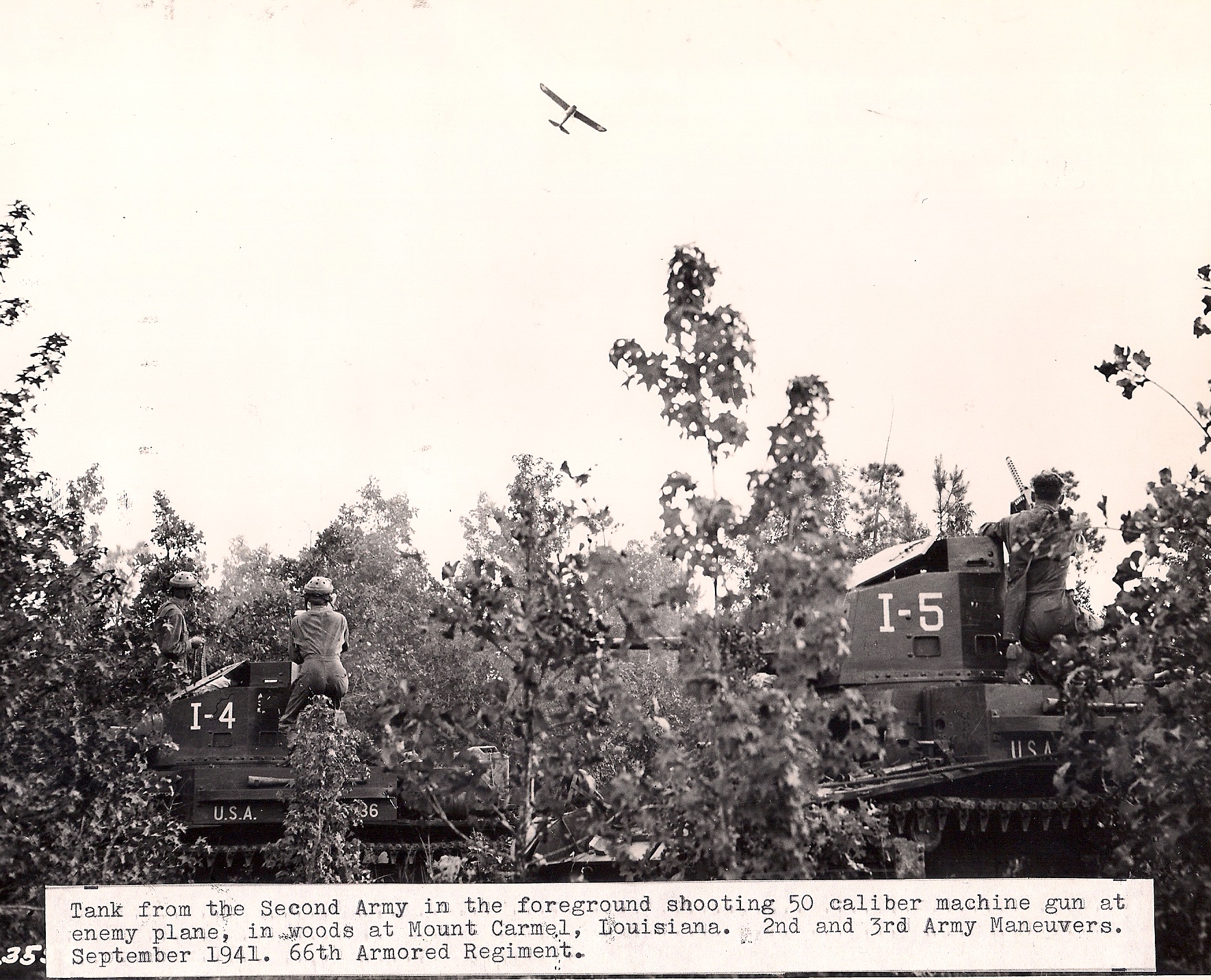
Grasshopper observation plane flying over Mt. Carmel during the large scale maneuver battle at that location in 1941. (Rickey Robertson Collection)
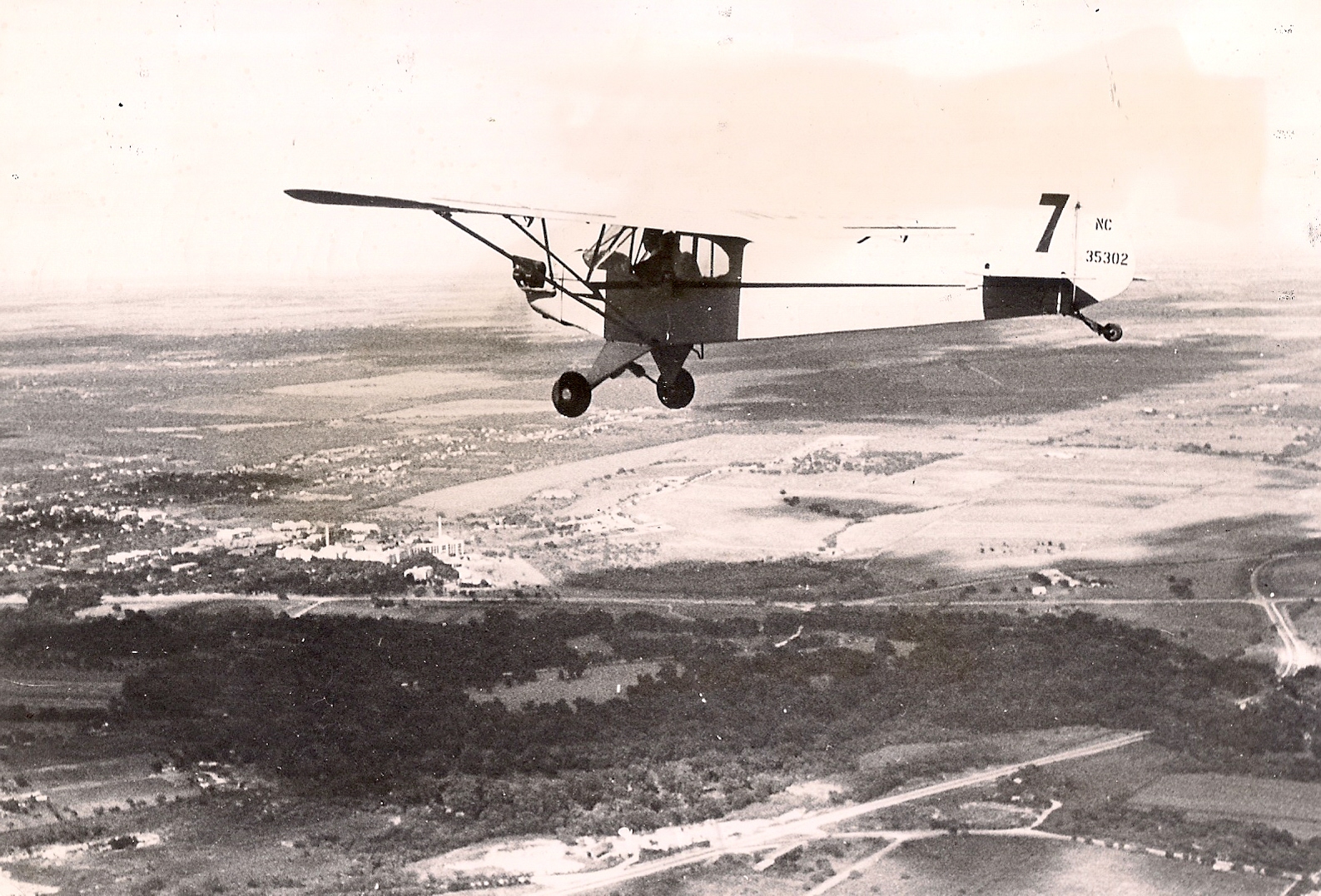
Grasshopper airplane with civilian pilot flying over Leesville, La. during the Louisiana Maneuvers of 1941. (Rickey Robertson Collection)
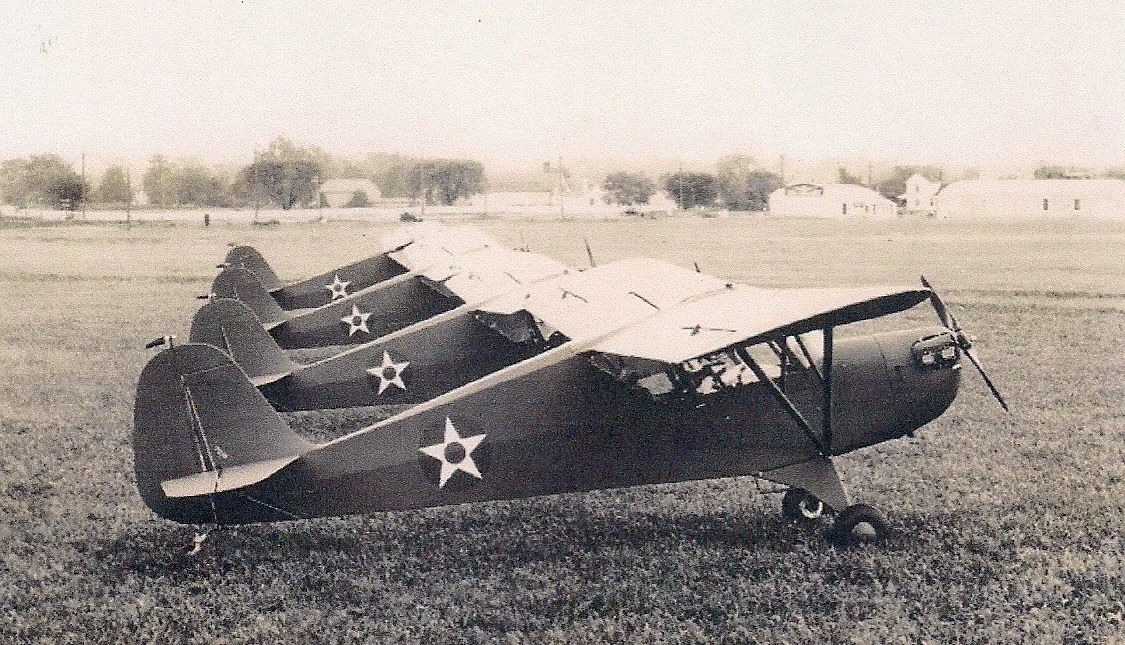
Grasshopper airplanes lined up ready for use during the Louisiana Maneuvers. (Rickey Robertson Collection)
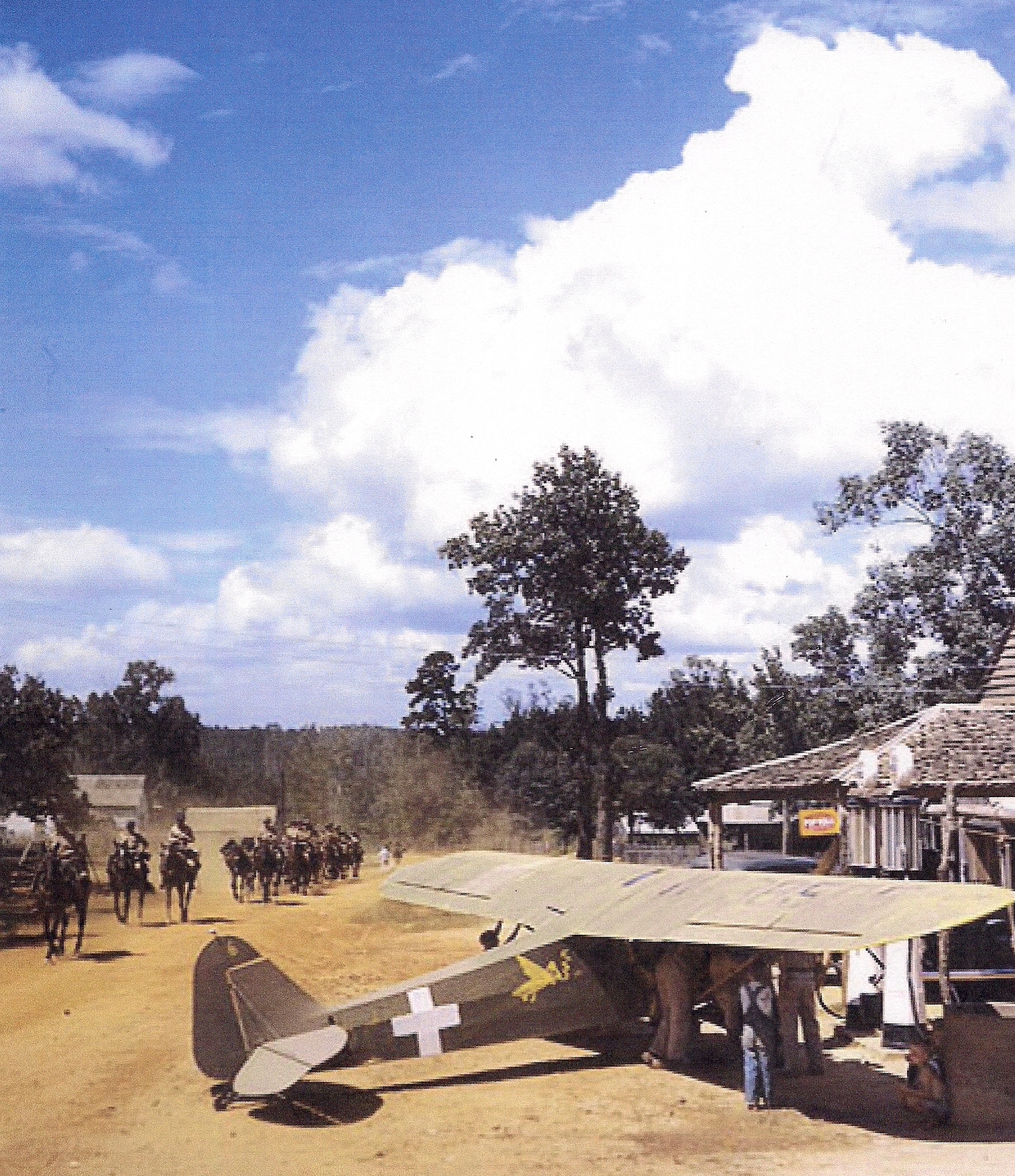
Grasshopper airplane fueling up at a rural country store as a mounted cavalry unit passes by. Note the country boy in overalls and barefoot looking at the airplane. (Courtesy Friends of DeRidder Army Air Base Collection)
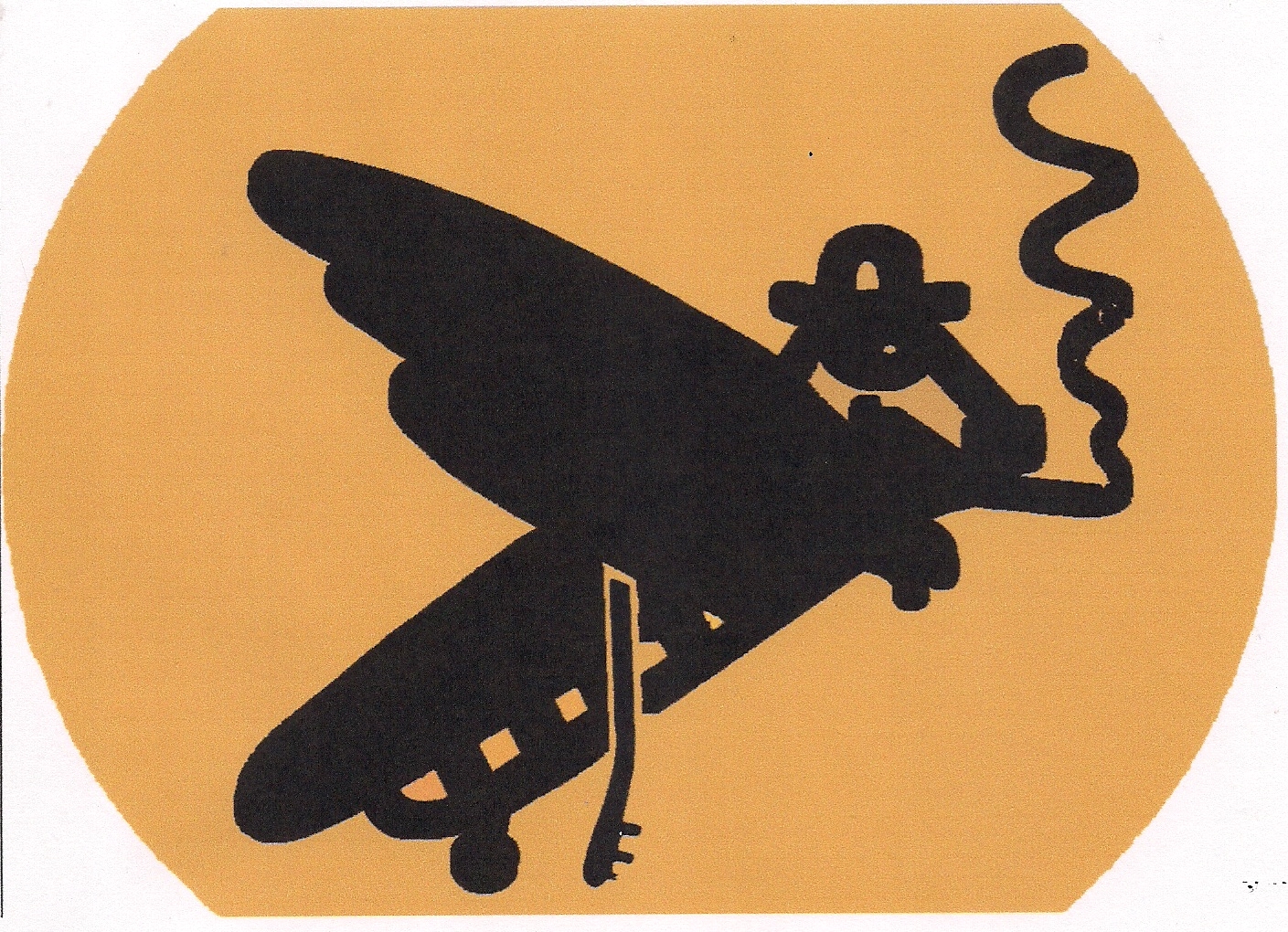
Insignia of the Grasshopper airplanes. Placed on the aircraft and worn by the pilots of these planes on their flight jackets. (Friends of DeRidder Army Air Base Collection)
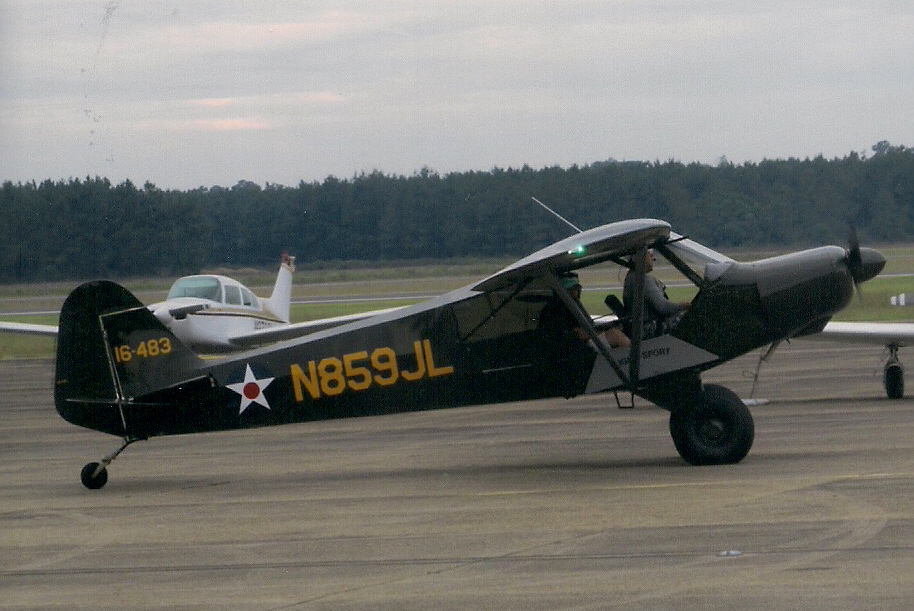
Grasshopper airplane in early Army markings at the Grasshopper Fly-in at DeRidder, La. in September 2014. (Rickey Robertson Collection)
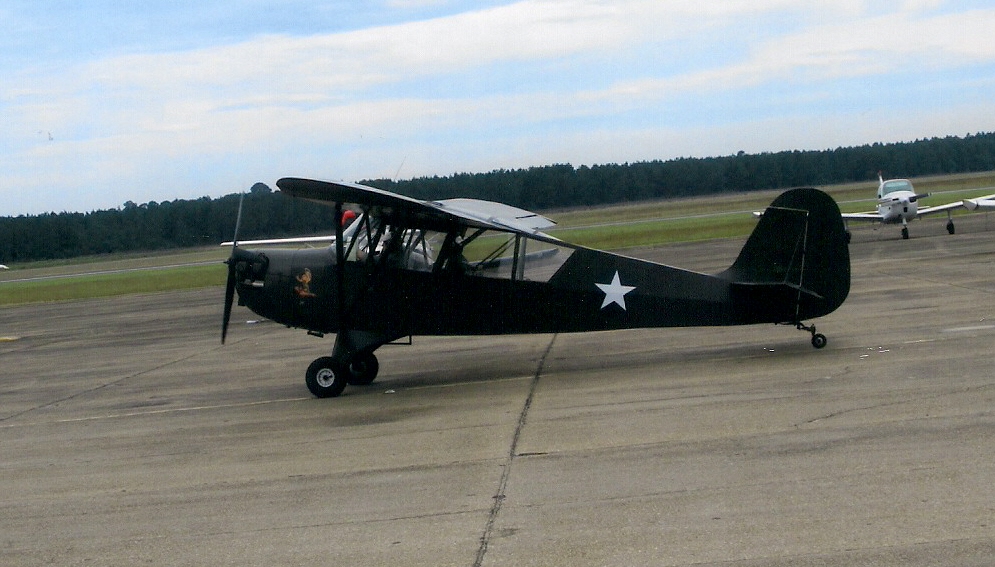
Grasshopper airplane with early World War II markings at the Grasshopper Fly-in at DeRidder, La. in September 2014. (Rickey Robertson Collection)
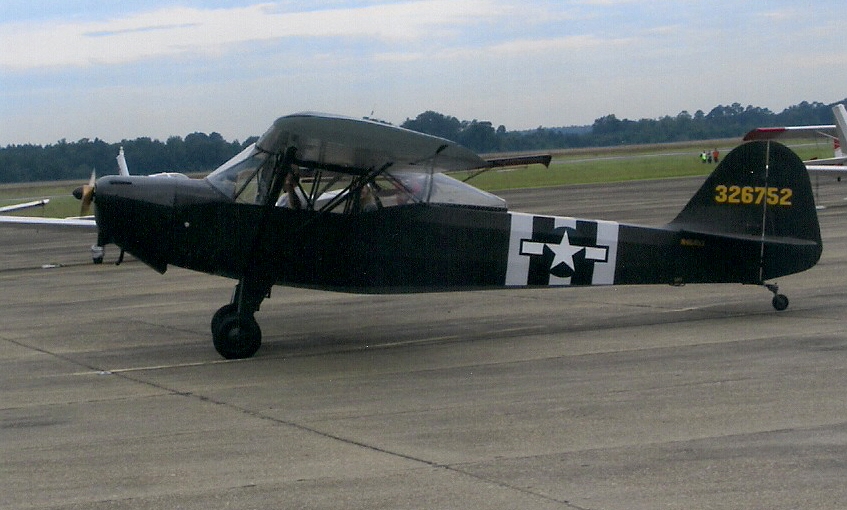
Grasshopper airplane with invasion markings as used by aircraft on June 6, 1944 during the landings in Normandy, France. This airplane also was at the Grasshopper Fly-in at DeRidder, La. in September 2014. (Rickey Robertson Collection)
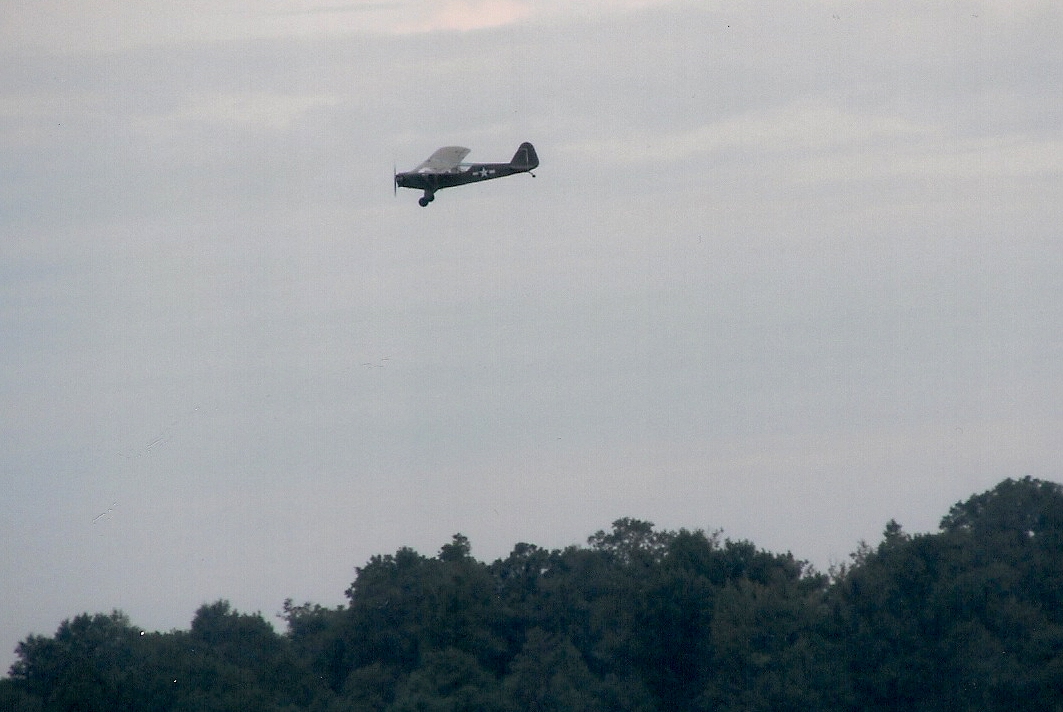
Grasshopper airplane conducting "flour bombing mission" during the Grasshopper Fly-in at DeRidder, La. in September 2014. The crowd enjoyed watching the grasshopper planes dropping flour bombs on ground targets. (Rickey Robertson Collection)